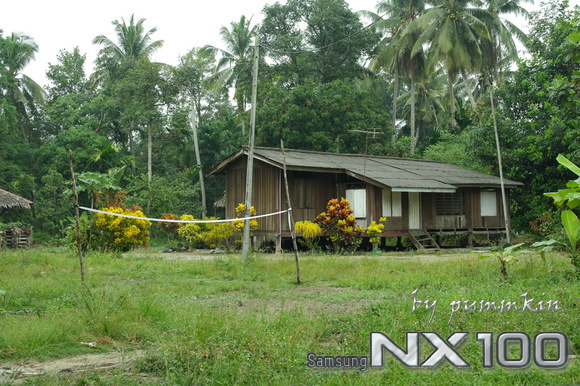
Carey Island is the home of one of Malaysia’s many indigenous tribe (Orang Asli) called Mah-Meri in the state of Selangor. With a legacy of wood-carving & pandanus leave weaving skills, the Mah-Meri had been in their settlement in Kg. Sungai Bumbun since the beginning of time. Now the island has been taken over by oil-palm conglomerates & the place has been converted into a huge oil palm estate, with the exception of this settlement that is still untouched. Passing a golf club on the right, we came to a junction with an indicative signboard to enter the village.
I was really intrigued by their craft using the pandanus leaves that’s been dyed in colour & delicately handwoven to make beautiful purses, wallets, mats & baskets. I got to hear about them through Reita, who was manning the Gerai OA at the Museum during a showcase of indigenous people’s crafts. We set out in the morning of 23 July, in a convoy of two cars, Soon’s 4WD & my Pammobile. Making a quick pit stop for nasi lemak along the way, Carey Island is only a mere 48km from Kuala Lumpur.
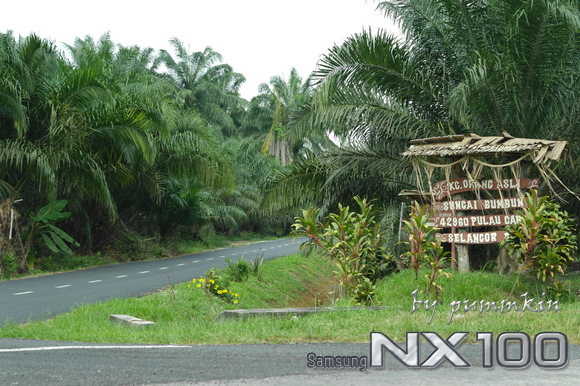
Arriving at the entry point junction of the settlement, it started to rain. There were tell-tale signs that this community is into animism. The woven decorative leaves that hangs from a tall, bamboo pole that droops at the roadside, marks the entrance to their place of residence. Shrines are built from all natural materials, offering atonement to their ancestors for divine protection. We soon got familiar when we asked whoever we could apprehend in the rain, to tell us how to get to the weavers & the carvers. And we got there just in time to hijack Samri, a Mah Meri woodcarver, who was on his way out to fish in the nearby river when the rain stopped.
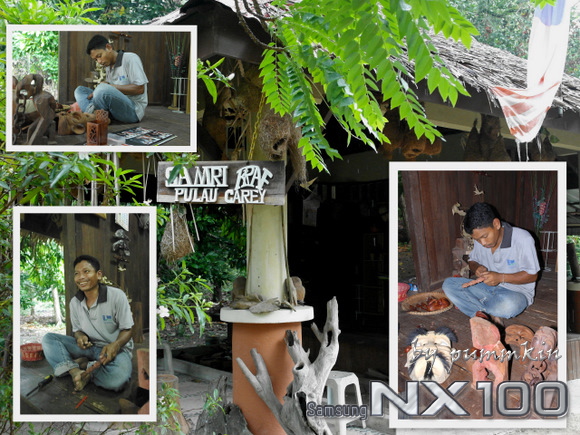
Samri’s shed & woodcarvings.
As he demonstrated the craft, he showed us his works & photo albums of the places he had been around the world to showcase this art form. He sometimes receives commissions to do statues & idols which he takes his time to finish. Samri told us the tales that were told to him by his forefathers about the mysticism of the knives that their ancestors used to defend themselves against monsters & dragons in the jungle. Presumably, they must’ve encountered territorial spirits. He elaborated with such drama, that I began filming him to record his account. It should be uploaded with links here in the next few days. He learnt the craft from his father, who learnt the craft from his forefathers. A skill handed down the generations, Samri work can be commissioned & can be contacted at +6013-2286045.
Going pass his hut to another similar thatched roofed hut, we found the weavers whom we had come for. The ladies were sitting on the raised platform with basketful of dyed pandanus leaves that were ready to weave.
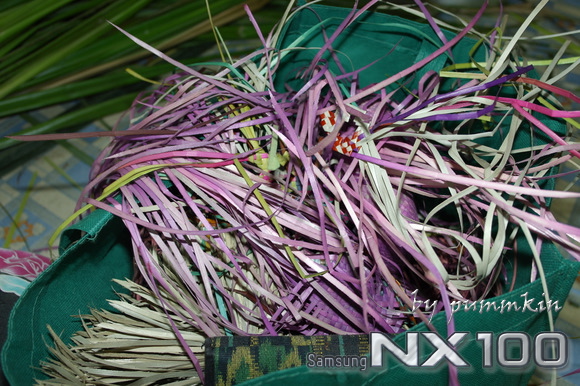
Colourful leaves for the weaving.
Asking permission to photograph them, we soon got into a lively conversation with them. SoonCM, then took the opportunity to address his curiosity:-
SoonCM: “Macamana dapat warna seperti ini ah?” (How do you get these colours? – pointed to the weaving)
Orang Asli Lady: “Belilah! Dari China! Apa warna pun ada!” (Buy lah! From China! Whatever colours are available!)
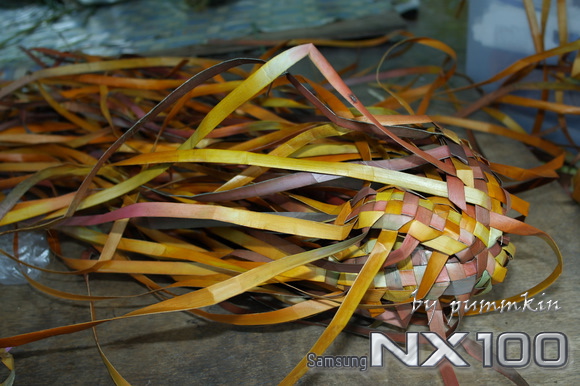
Colourful unfinished woven basket.
Stunned, SoonCM was undeterred. He wanted to know how the leaves are dyed in the colours they are now. Not how the colours were obtained. Nevertheless, he continued the conversation while I laughed.
SoonCM: “Dari mana datangnya daun ini? Mana boleh dapat?” (Where do these leaves grow? Where can you find them?)
Orang Asli Lady: “Daun ini datang dari pokok Pandanus, terdapat di dalam hutan.” (These leaves are from the Pandanus tree from the jungle.)
SoonCM: “Oh, bila kamu akan masuk hutan lagi ah? Saya nak ikut boleh?” (Oh, when are you going into the jungle again? Can I come along?)
Orang Asli Lady: “Sini mana ada hutan? Gorf kors adalah. Semua ladang kelapa sawit. Mana ada hutan?” (Where got jungle here? Golf course got lah. Everything here is oil palm estate. Where got jungle?)
By which time, I was hysterical, trying not to shake to take my pictures. I was quite certain the lady thought we were genuine city slickers, yet I couldn’t stop SoonCM from having that conversation with them. Still adamant, he went on to enquire about festivals & celebrations.
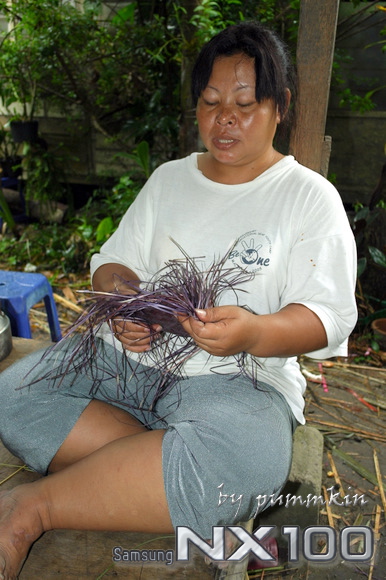
Orang Asli Mah Meri weaver lady.
SoonCM: “Di sini ada musim perayaan ah? Saya mau datang tangkap gambar lah.” (Are there any celebrations/festivals here? I want to take pictures.)
Orang Asli Lady: “Ada. Perayaan sembah moyang. Datanglah nanti. Ada makan minum.” (Got. Festival to honour our ancestors. Come then. Got food & drinks.)
SoonCM: “Bila ah? Bulan depan ah?” (When? Next month?)
Orang Asli Lady: “Tahun depan. Tahun ini sudah lepas.” (Next year. This year’s has passed.)
SoonCM: “Di sini bila orang mati, ada perayaan untuk mereka tak?” (Here, when people die, are there any celebrations for them?)
Orang Asli Lady: “Orang mati mana ada perayaan? Kalau sudah mati, mati lah. Mana ada perayaan lagi?” (Where got celebration for dead people? If they die, they die lah. Where got celebrations?)
SoonCM: “Oh, tapi saya dengar di suatu tempat bila orang mati ada perayaan punya….” (Oh, but I heard in some villages when a person dies, there’s a celebration.)
SoonCM: “Macamana kita nak tahu bila? Kamu ada nombor kontak ah?” (How do we get to know when? Do you have a contact number?)
Orang Asli Lady: “Ada. Kat Facebook.” (Got. On Facebook.)
By then, even the Orang Asli ladies were laughing their heads off, at the visibly stunned & blissfully ignorant city slickers like all of us who have had little or no interaction with the indigenous people in the country, much less with rituals for the dead. Surely in his conversation, he never meant to be offensive but instead of calling it upacara, (ceremony), he used perayaan (celebrations) instead. Being quite the sport as he is, he thanked the ladies for their time & entertainment & vowed to come back for those photos he came for.
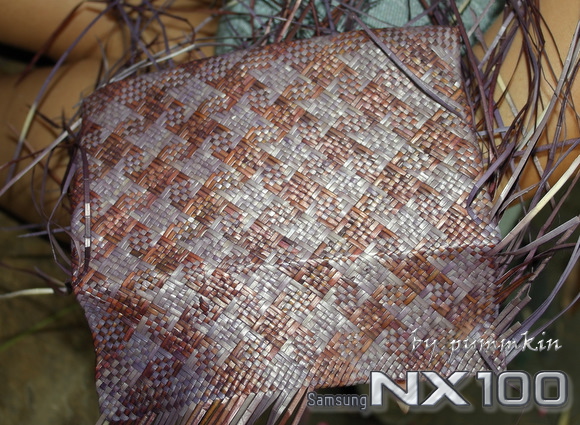
Nearly finished wallet woven by the Mah Meri ladies.
We explored the rest of the village & found many edible fruits from the mature trees. The sun was already high above our heads & the nearest eatery is about 10km away. One old pakcik (uncle) came out to ask us what we were doing & I replied that we are from the city coming here for some fresh air & pictures! He then told us the fruits are ripe & we can eat them if we wanted to…….and we did!
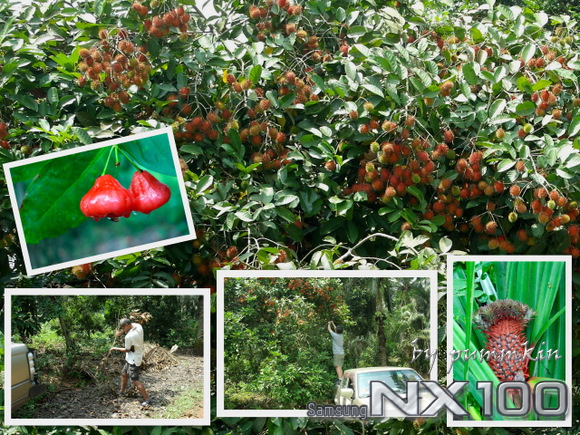
One such tree was the blossoming Rose Apple tree, with juicy, succulent, sweet Rose Apples hanging like bells off them. Then my subject disappeared. “Soon! Where’s my subject?!?” “Errr….I ate them. I thought you’d finished taking pictures..???” *Face palm!* Then Aziz spotted the fruiting Rambutan tree, with a little hesitation, we discussed about how we could get our hands on those hairy fruit. SoonCM’s 4WD came in really handy & naturally, he got the honours of tending & feeding the troupe! Aziz snapped off some branches for him to jostle the bunches while Edmund scoured the area for other fruiting trees. I realised that only hunger can bring out the hoarding instincts in us as we began to ravish any kind of edible fruit found! And no, we didn’t touch Pakcik’s prized red pineapple. 🙂
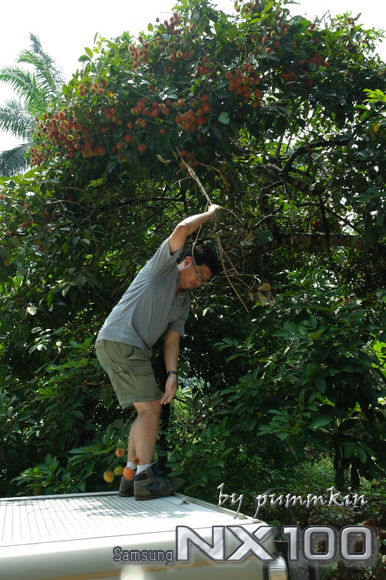
SoonCM, our hero!
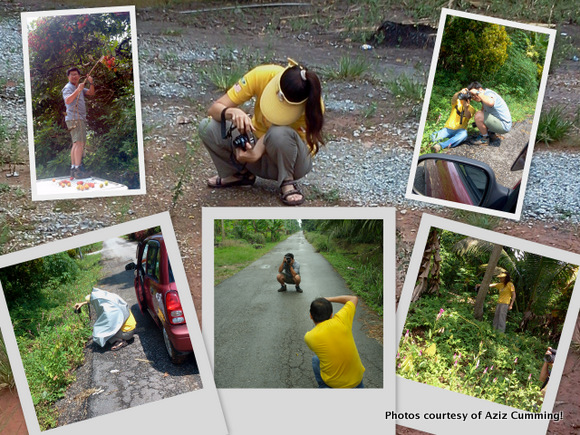
Compromising positions???
The village is filled with nature’s surprises & naturally, a photographers delight as we trailed all the way to the end of the road. We were even treated to Man-Faced Bugs mating!
And what was I shooting wrapped in a windscreen shield?
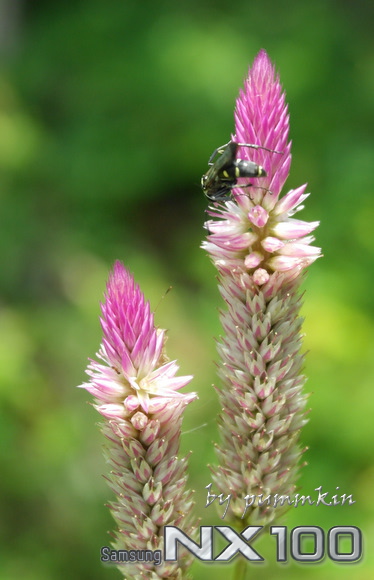
Flowers.
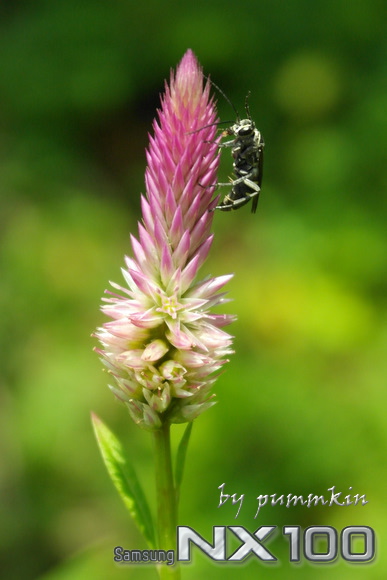
Bee on flower.
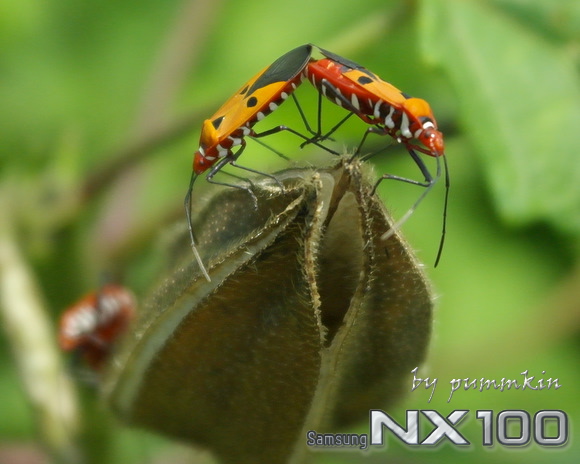
Mating Man-Faced Bugs!
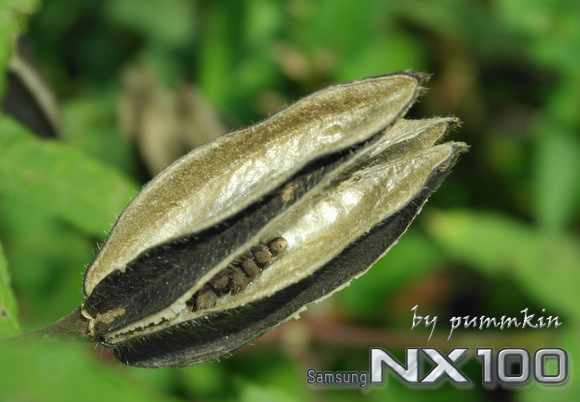
Pod.
Wrapping the trip with a seafood lunch, we headed back feeling liberated by the Orang Asli giving us an insight to their lives, marvelling at their skill that would have been lost if not for programme that helps them sell their goods to receive 100% of the profits thereof. Do help them keep the craft alive! They can be found on Facebook (really!) here:- http://on.fb.me/ojtEWm
Gerai Online Paling Best
Hello! This post could not be written any better! Reading this post reminds me of my previous room mate!
He always kept talking about this. I will forward this write-up to him.
Fairly certain he will have a good read. Thank you for sharing!
Her offering is thoroughly explained, and provides security
for anyone who may wish to try her methods. 05) less HSV infections, symptoms
were significantly (p less than 0. Bacterial Vaginosis (BV) on the other hand is as
a result of bad bacterial such as haemophilus vaginitis growing at rate that the body’s immune system can’t keep in check.
This article provides clear idea in favor of the new visitors of blogging,
that in fact how to do running a blog.
Balancing equipment, high quality and low price,
anyone can buy, even to provide paid services to balance any parts
<a href="https://vibromera.eu/shop/854/
Equipos de equilibrado, de alta calidad y bajo precio, cualquiera puede comprarlos,
incluso prestar servicios de pago para equilibrar cualquier pieza
<a href="https://vibromera.eu/shop/854/
Backlinks for your site, write ask,
I will tell you how to raise the position for your site on keywords
https://sites.google.com/view/backlinks-seo-sell/
https://t.me/Backlinks_24